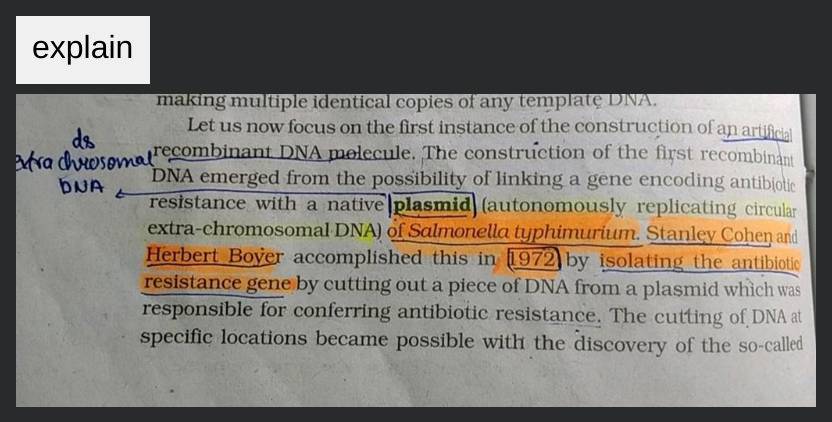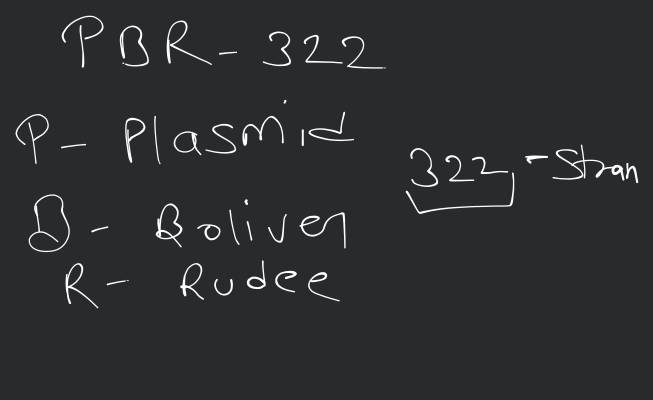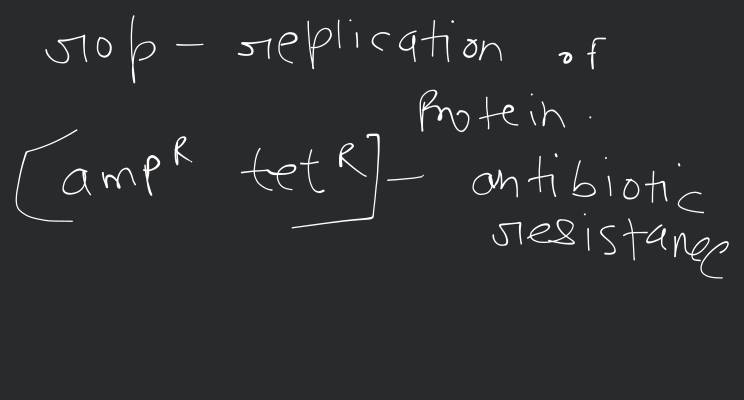Question
Question asked by Filo student

Let us now focus on the first instance of the construction of an artificial recombinant DNA molecule. The construction of the first recombinant DNA emerged from the possibility of linking a gene encoding antibiotic resistance with a native plasmid (autonomously replicating circular extra-chromosomal DNA) of Salmonella typhimurium. Stanley Cohen and Herbert Boyer accomplished this in 1972 by isolating the antibiotic resistance gene by cutting out a piece of DNA from a plasmid which was responsible for conferring antibiotic resistance. The cutting of DNA at specific locations became possible with the discovery of the so-called
Found 7 tutors discussing this question
Discuss this question LIVE
13 mins ago
Filo tutor solutions (10)
Learn from their 1-to-1 discussion with Filo tutors.
13 mins
Uploaded on: 11/15/2022
Was this solution helpful?
136
Share
Report
13 mins
Uploaded on: 4/19/2023
Was this solution helpful?
138
Share
Report

One destination to cover all your homework and assignment needs
Learn Practice Revision Succeed

Instant 1:1 help, 24x7
60, 000+ Expert tutors

Textbook solutions
Big idea maths, McGraw-Hill Education etc

Essay review
Get expert feedback on your essay

Schedule classes
High dosage tutoring from Dedicated 3 experts
Practice more questions on Biotechnology
Question 3
Easy
Views: 5,502
Students who ask this question also asked
Question 1
Views: 5,197
Question 2
Views: 5,522
Question 3
Views: 5,676
Question 4
Views: 6,059


Stuck on the question or explanation?
Connect with our Biology tutors online and get step by step solution of this question.
231 students are taking LIVE classes
| Question Text | Let us now focus on the first instance of the construction of an artificial recombinant DNA molecule. The construction of the first recombinant DNA emerged from the possibility of linking a gene encoding antibiotic resistance with a native plasmid (autonomously replicating circular extra-chromosomal DNA) of Salmonella typhimurium. Stanley Cohen and Herbert Boyer accomplished this in 1972 by isolating the antibiotic resistance gene by cutting out a piece of DNA from a plasmid which was responsible for conferring antibiotic resistance. The cutting of DNA at specific locations became possible with the discovery of the so-called
|
| Updated On | Apr 30, 2023 |
| Topic | Biotechnology |
| Subject | Biology |
| Class | Class 12 |
| Answer Type | Video solution: 10 |
| Upvotes | 976 |
| Avg. Video Duration | 8 min |






